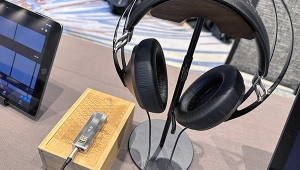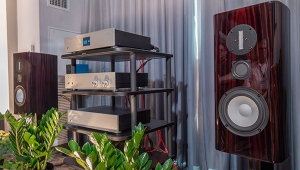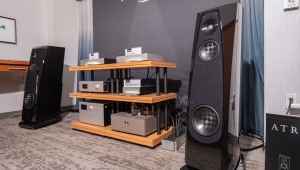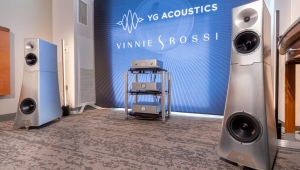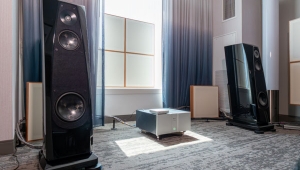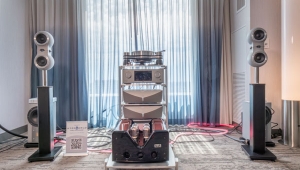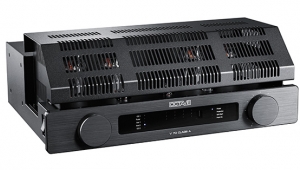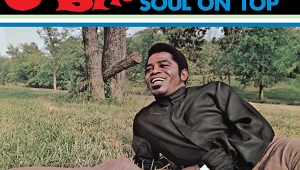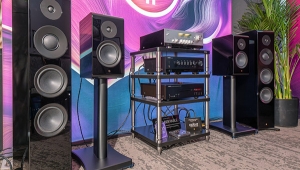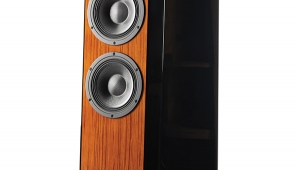| Columns Retired Columns & Blogs |
Perfectionist Audio Components CPR IIIB/TIPS preamplifier Measurements
Sidebar 3: Measurements
The output impedance of the battery-powered PAC CPR IIIB/TIPS (hereafter referred to as the CPR) at its main outputs measured under 201 ohms at 1kHz. The input impedance at the same frequency was just under 49k ohms at its lowest (right channel, full volume). The tape output appeared to be unbuffered. Unity gain was at 12:30 on the volume control; the maximum line-level gain of the preamp was 39.7dB in the left channel, 38.9dB in the right (with the balance control centered). DC offset measured 1.6mV in both channels. The CPR was noninverting, both line and phono. Phono-stage gain measured 65.7dB at 1kHz. The input impedance of the phono inputs measured 125 ohms.
Fig.1 shows both the line-frequency response and the RIAA response through the phono input. There is little of note in the line response short of a small rolloff at frequencies above 20kHz. Note, however, the channel mismatch (the volume control was on full for this reading, the balance control physically centered). When the volume control is reduced to unity gain, the right channel rises to 1dB above the left; at 9:00 it drops back to 1.25dB below. As I noted in my measurement writeup on the TARA Labs Space & Time Passage preamplifier (which exhibited a similar problem) elsewhere in this issue, this is marginal volume-control tracking quality. Perhaps TARA and PAC are using the same marginally specified pot for a volume control.
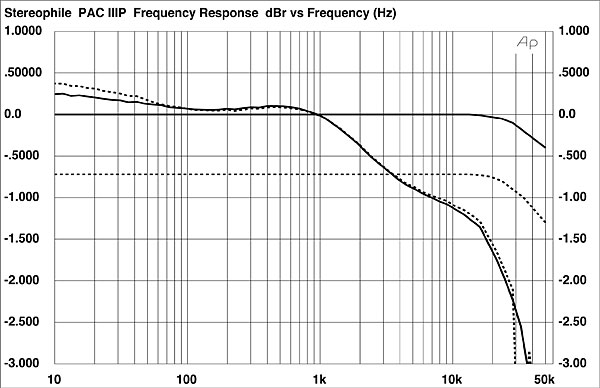
Fig.1 PAC CPR IIIB/TIPS, line-stage frequency response and MC phono-stage RIAA error (right channel dashed, 0.5dB/vertical div.)
The phono-stage response in fig.1, taken at the tape outputs (as were all of the phono stage measurements), is also marginal, the shape of the rolloff above 1kHz suggesting an error in the component values in the RIAA network. The drop of about 1.7dB at 20kHz relative to the 1kHz level will be audible as a slight softening of the top end, though not a dramatic one. Still, this type of response deviation is not really acceptable in a purportedly high-end product. It should not require a major redesign for PAC to correct this problem.
Fig.2 shows the crosstalk for the line input (straight diagonal traces) and the phono input (the two less straight curves). Note that the former, though showing a fair amount of increase at higher frequencies (typical interchannel capacitive coupling, also visible in the phono curves), also show very close matching between channels. This indicates good symmetry in circuit layout. The phono crosstalk curves are also quite closely matched, and are good on an absolute basis.
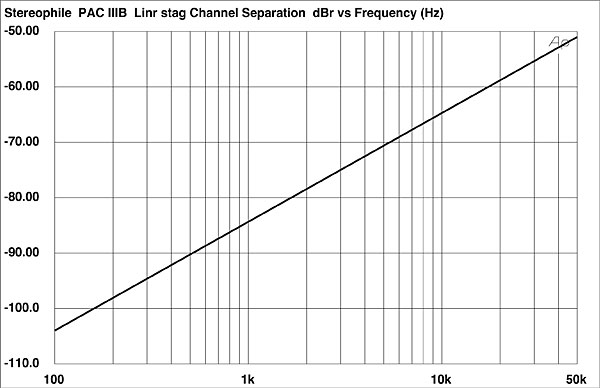
Fig.2 PAC CPR IIIB/TIPS, line-stage channel separation (10dB/vertical div.)
The line distortion shown in fig.3 shows the distortion for two input levels. The distortion is actually higher for a 100mV input—likely the result of the measurement being dominated by noise. Normally we would pick an input level where the THD+noise was the lowest to run this curve, to minimize the results of noise on the reading. But with the PAC, the THD+noise at 1kHz continued to decrease as the input level increased—on up to and above 650mV. As the input increased, so did distortion at higher frequencies, visible in the two curves shown. And at a 650mV input (curve not shown), the distortion at 1kHz is a low 0.0025%, rising to 0.6% at 20kHz and 4% at 50kHz (right channel, left slightly less). The rise in high-frequency distortion noted in the CPR's line stage is unusually high for a modern solid-state preamplifier, but will not necessarily be audibly significant. (Remember, the first distortion component of a signal is at twice that signal's frequency.)
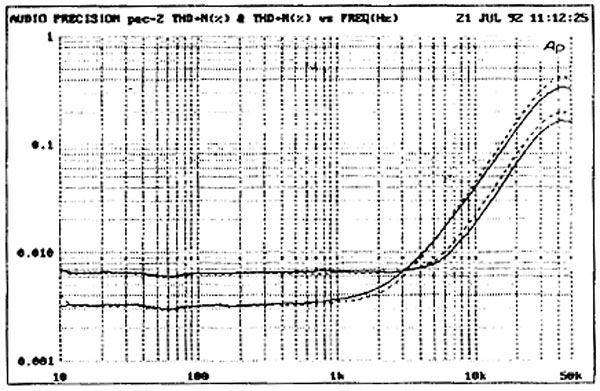
Fig.3 PAC CPR IIIB/TIPS, line-stage THD+N (%) vs frequency (right channel dashed) for 100mV input (top curves below 3kHz) and 300mV.
In order to minimize the contribution of noise in the THD+noise measurement of the CPR's phono section, it was necessary to increase the input to a very high (for a moving-coil input) 4mV. At a lower input, the noise dominated the measurement and increased the reading; at a slightly higher input, the phono stage overloaded and did the same. Fig.4 shows the THD+noise vs frequency both for an input of 4mV (lower traces) and 2.5mV (upper). While I suspect that the "true" distortion of the PAC's phono stage is much lower at a more reasonable level (for a moving-coil input) of 1mV and below, the noise at those levels made it impossible to determine the true distortion.
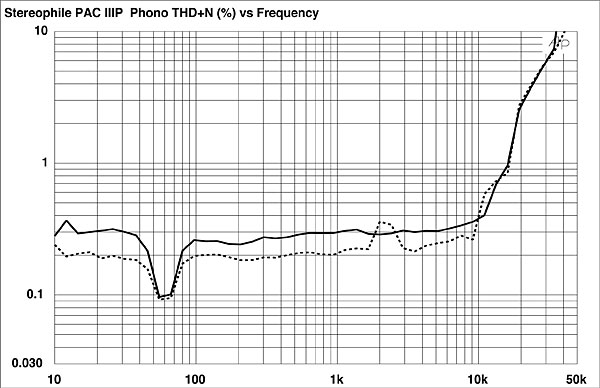
Fig.4 PAC CPR IIIB/TIPS, MC phono-stage THD+N (%) vs frequency (right channel dashed) for 4mV input at 1kHz.
The line stage of the PAC reached clipping (1% THD+noise at 1kHz) at 1.023V input, producing an output of 9.79V. Clipping was abrupt: an input of 980mV produced a distortion of just 0.019%. Phono overload (again, 1% THD+noise) with an unequalized input was 475µV at 20Hz, 4.6mV at 1kHz, and 34mV at 20kHz. These figures are equivalent to overload margins of 19.6dB, 19.3dB, and 16.7dB, which are all a little lower than I would like. High-output MCs are probably best avoided.
The line-stage measurements of the PAC were satisfactory if you discount the volume-control tracking, which should have been better. The phono stage, on the other hand, appears to be rather noisy, with an RIAA response which should have been more linear. Not a bad result, overall, at least for the line stage—acceptable in a product of otherwise good sonic quality, but not textbook results for a product at this price level.—Thomas J. Norton
- Log in or register to post comments

















